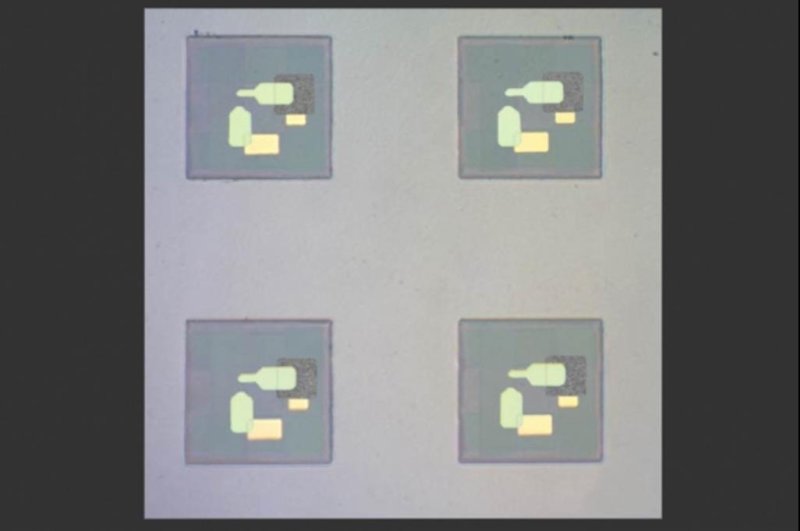The diagram showcases miniature 2D circuits attached to colloidal particles, which can be suspended in liquid or gas. The microbots can sense their surroundings, store data and compute basic functions. Photo by MIT News
July 23 (UPI) -- Engineers at MIT have designed tiny, new robots capable of sensing their surroundings. The microbots, roughly the size of a human egg cell, could be used to explore hard-to-reach passageways, like the human intestines or a gas pipeline.
Scientists designed the tiny robots by coupling electric circuitry to colloids, a mixture feating insoluble particles so small they never settle in water or air. Colloid particles always remains dispersed.
"We wanted to figure out methods to graft complete, intact electronic circuits onto colloidal particles," Michael Strano, a professor of chemical engineering, told MIT News.
Researchers have previously tried to turn small particles or molecules into robots, but scientists have mostly focused their efforts on improving the mobility of microbots. The team of engineers at MIT wanted to make more functional microbots.
The new microbots' circuitry allows the cell-sized robots to sense their surroundings, store data and compute basic tasks. A small photodiode provides each bot's circuit with a tiny bit of electricity, enough to sense the surrounding environment and record its observations.
Instead of using a traditional microchip, which need to be attached to hard-bodied substrate, researchers developed a circuit out of thin, flexible materials, like graphene. The circuits need only a tiny bit of energy to perform. Their flexibility also allowed them to be attached to colloid particles, which are subjected to a complex array of forces when suspended in liquid or gas.
Researchers described their novel microbots -- the smallest capable of sensing their surroundings -- this week in the journal Nature Nanotechnology.
The robots could eventually be used to develop less invasive colonoscopies. They could also be used to search for structural vulnerabilities inside oil and gas pipelines.
Ultimately, scientists hope other researchers will improve upon their methods and come up with new ways to utilize the robotics technology.
"We see this paper as the introduction of a new field [in robotics]," Strano said.















